The Shaman Hero, Thrall (née Go’el), despite only having had his debut in the third Warcraft game, is probably one of the most well-known and loved characters among all of Blizzard’s ludography.
Leader, sage and even savior, of all the Warcraft characters, he is the one that adheres the most to the prototypical “hero’s journey” – and yet his tale is still not over.
The Fall and Rebirth of Shamanism
There is no talking about Shamans without talking about Thrall.
While the practice of shamanism was once an important part of the spiritual tradition of the orcish Horde, that all ended long before Thrall was born, when the leaders of the Horde forged an unholy pact with the demonic Burning Legion.
Enticed by Gul’dan’s promises of power and conquest, the orcs drank the demonic blood of Mannoroth, earning the strength and dark magic to depart from their home world of Draenor and into the world of Azeroth, where they started their war of conquest.
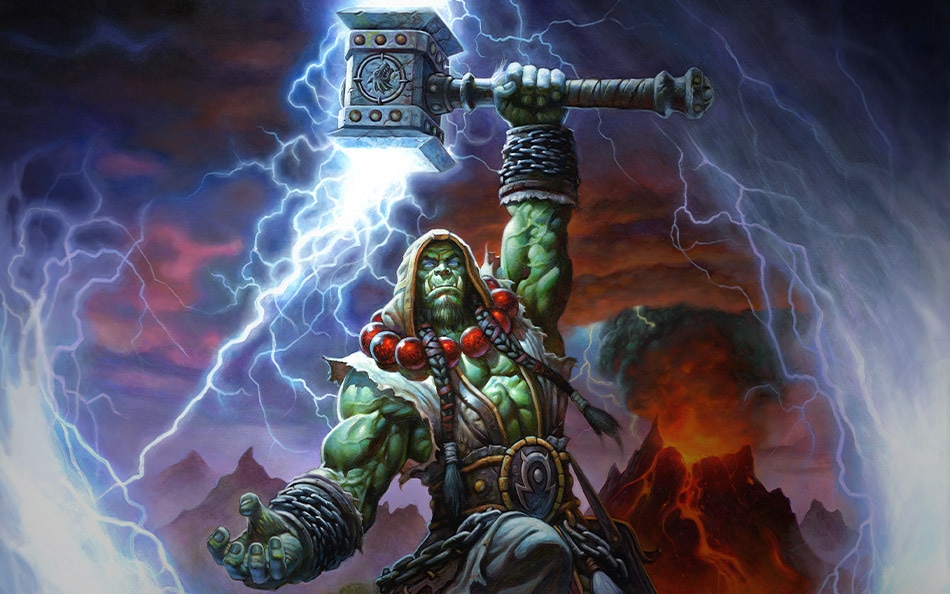
Their submission to the demon’s power severed their ancestral bond with the elements, and so, shamanism was wiped out nearly overnight. A few orcs clung to the old traditions, seeking refuge from the Legion and Gul’dan’s own Shadow Council. But these were cut off from the main Horde that marched into Azeroth, and it would be many years before they were reunited.
But even as the Horde was victorious in their first campaign and destroyed the human kingdom of Stormwind, there were some within it that began to wonder whether they had not erred with their dark bargain.
Such was the case of Frostwolf chief Durotan, Thrall’s father. And for that, he and his family were killed by Gul’dan’s Shadow Council assassins. But the assassins didn’t finish the job. Durotan’s newborn son, Go’el, was left to die in the wilderness.
But this was not to be, and he was instead found amid the carnage of his parent’s death by an ambitions human commander, Aedelas Blackmoore.
And so, he was raised among humans, a slave to Blackmoore, who had ambitions to make him into a warrior that combined the orc’s natural prowess for battle with the keen intellect and battle tactics of his own race.
Blackmoore thus named him “Thrall” and had him alternate his time between fighting in the gladiatorial arenas and studying under the best masters. When the time came, he was to rally the defeated orcs into an army in Blackmoore’s service.
But Blackmoore, cruel and often drunk, abused Thrall once too many, and the young orc managed to escape captivity and reunite with his people. He found them shattered, a shell of their former selves, now that they had been beaten back by the humans, and forsaken by their demonic allies. The demon’s power had proven an addiction, and the entire race was suffering from withdrawal, driven into a powerless state of apathy.
But Thrall would not have this. Slowly, he reconnected with his roots, reviving the Horde’s attunement to the natural elements and the tradition of shamanism, while at the same time leading a guerrilla war to liberate his captive brothers and sisters.
Slowly, a new Horde, free from demonic influence, was
rebuilt, and the Shaman was reborn.

The Shaman Gameplay
So it came to pass that shamen were a defining unit of the Horde faction in Warcraft III, in many ways replacing Warcraft II’s Death Knight as a counterpart to the Alliance’s Paladin.
A powerful and versatile unit, the Shaman could dispel beneficial effects from enemy units, but it especially shone due to their unique bloodlust spell, capable of empowering themselves and allies into a state that could turn the tide of a battle.
A more specialized kind of Shaman was the hero unit called “Far Seer” and it’s only here that the “connection with the elements” theme starts to show. Far Seers can, well, see far with their far-sight, and wield the powerful elemental spell “Chain Lightning”, that forked over into several Hearthstone cards.
The original Far Seer had one more contribution to do to his World of Warcraft and Hearthstone successors: a pair of loyal companions through the feral-spirit spell.
It was only with the coming of the World of Warcraft Shaman that most of the spells that have come to define the hero got into place. The class got a new breath of life as a hybrid, directly opposing the Alliance-only paladins as melee fighters, healers and support.
Blizzard did not want Shamans to be symmetrical to Paladins, though, so some key differences were put in place, the greatest of which was the Shaman’s Bloodlust ( later, when Alliance got Draney Shamans, they had “Heroism” ) and their unique buffing mechanic, the totems.
The totems came to define the shaman. Unlike in Hearthstone, a shaman in WoW could summon any of the totems at will, though the more powerful ones had a bigger cooldown period.
To this day, though, players complain of totems as a bulky, hard to manage mechanic, mostly because it is tied to proximity, in a game that often requires a lot of moving around.
What is nowhere to be seen in either World of Warcraft or Warcraft III are the origins of the Shaman Hero’s controversial “Overload” mechanic.
It seem that while all the other classes got mechanics directly translated from or inspired from other Blizzard games, the Overload theme was exclusively created for the express purpose of differentiating the class in Hearthstone.
Feedback Wanted: Do you have any idea if there might be a lore reason that originated or inspired the Overload mechanic? Or an old WoW spell that I might be forgetting? My research turned up nothing. Please let me know in the comments!
Thrall, an Agent of Change
From his humble origins, Thrall came to be the Warchief of the Horde, and as such, he was contacted by none other than the Magus Medivh at the start of Warcraft III. Unlike his human counterparts, the powerful shaman could feel the truth within the disguised Guardian’s words, and soon, with the help of his friend and lieutenant grommash-hellscream, he had his people depart towards the long-forgotten continent of Kalimdor.
From here on, his exploits cover not only a game, but also several novels and World of Warcraft expansions. Like the mage hero Jaina Proudmoore, he is often used as a point-of-view character for the player / reader to witness the greater events that shape the world.
His perspective is also central to the underlying theme of the horde’s more or less constant struggle between their feral and warlike tribal nature and their attempt of being part of a more harmonious, civilized world.
His story in Warcraft III continues as he leads his people to explore and pioneer the eastern coast of Kalimdor, clashing with both Jaina’s forces and the native Night Elves. He found new allies in the Tauren, a tribal people much like his ancestors, when he healed and befriended their chieftain, cairne-bloodhoof.
Due to the efforts of Medivh, the three factions ended up fighting as allies against the onslaught of the Burning Legion, but not before grommash-hellscream and his Warsong men succumbed once more to the allure of the Legion’s tainted offer.

The demon-empowered orcs slaughtered the Elves’ demi-god cenarius before Thrall could intervene, and that opened a schism between both races that would never heal.
grommash-hellscream, in the meantime, was redeemed by sacrifice, having died while striking the killing blow against the Legion’s emissary, Mannoroth. To Thrall, he left his mythical gorehowl, a weapon that the Warchief passed on to Grom’s son, the Warrior Hero Garrosh, many years later.
The years that followed demanded much of the young Warchief’s skill at diplomacy. It was not easy setting up his nation while sharing Kalimdor with both humans and night elves, and he and Jaina formed a close friendship through many years of keeping tempers cool and managing strained relationships between their people.
At the same time, he made an effort to expand the reach of the Horde, by making a pact with the dreaded sylvanas-windrunner, banshee-queen of the Forsaken, undead that had escaped the Lich King’s control and now wanted to join the Horde, as they knew that they would never be accepted by neither the elves nor the humans.
He would finally commune with the elements of his people’s historical past many years later, when the Dark Portal opened once more and the people of Azeroth invaded Outland, the shattered remains of what had once been Draenor, in an attempt to prevent a new invasion by the Legion.
In the plains of Nagrand, one of the few areas of Draenor that had been mostly spared by the Legion’s invasion, Thrall met the remnants of his ancestral people, the Mag’har, orcs untainted by the demonic blood that had survived Gul’dan’s purges. Among them was his grandmother, and his late friend’s son, Garrosh Hellscream.
From there on, Hellscream acted as Thrall’s companion and adviser, though Thrall often regretted it, as the young orc was brash and savage, and by the time the Lich King was again a threat to Azeroth, his warmongering attitude further endangered the already brittle peace between the Horde and the Alliance.
Eventually, though, as the cataclysm caused by deathwing engulfed the world, Thrall felt that his shamanistic prowess was needed to mend the damage to Azeroth, and he could not do so while tied to the responsibility of leading the Horde.
Hellscream, brash as he was, had returned from Northrend a hero, respected by all who served under him while fighting the armies of the Lich King, and so, Thrall gave him the reigns of the Horde, a decision he would come to regret many times since.

Now joining a shamanistic faction, the Earthen Ring, and leaving his armor behind, he donned the shamanic robes and beads that we currently associate with him. Thrall went into a second voyage of self-discovery, further increasing his attunement with the elements, and meeting his life-partner Agra.
By the end of the cataclysm, he was instrumental in helping the players defeat the all-powerful deathwing and bring peace to the land. After this, and with the knowledge that he would be a father soon, he decided to keep himself disconnected from the Horde, to focus on mending the damage caused by the cataclysm.
It’s during this period that what is perhaps the most damaging blow in Horde-Alliance relations is dealt.
As previously told in the Mage Lore article, Garrosh decided to eliminate Theramore once and for all, unleashing a mana-bomb on the human city, killing most of its inhabitants and the beloved Archmage rhonin.
An enraged Jaina decided to level Orgrimmar in retaliation, and while Thrall was able to learn of this in advance through a dream vision, he found himself unable to fight her to the death. In the end, it was the blue dragon Kalecgos’ timely intervention that stopped Jaina from ending the Shaman Hero’s life along with the nation he founded.
But even if the mage’s wrath was contained, their friendship was shattered forever, with Jaina declaring then and there that she would forever see the Horde and its people as mortal enemies.
By the end of the Mists of Pandaria story line, Thrall finally confronts Garrosh, but is beaten by the warrior, who had the foresight of preparing a way to negate Thrall’s shamanistic powers, knowing that the former warchief was not a match for him in a contest of pure strength.
After Garrosh was beaten by the players, Thrall was determined to execute him for all the evil he had wrought, but was stopped by none other than varian-wrynn, who demanded that the Warchief be put on trial, his fate to be decided by those he wronged.
Thrall consented to the trial, but refused to take up the mantle of Warchief once more, instead delegating the responsibility to the troll voljin, saying that it had been Vol’jin the one responsible for keeping the Horde together despite Garrosh’s exclusionary politics.
In the end, the trial was not to be. Having escaped through time and space to the Draenor of his forefathers, due to the help of a rogue agent of the Bronze Dragonflight, Garrosh finally met Thrall once again in the field of battle.
But this time, he could not cut the Shaman Hero’s access to the elements, and Thrall, with fire, earth and thunder, finished off the Warrior Hero once and for all.

The Present and the Future
This was by necessity a very condensed re-telling of what is perhaps the most developed and busy character in Warcraft history. And his story is still ongoing.
Tellingly, there is no other character than seems fitting to play this hero’s alternate. Thrall is the embodiment of the Shaman class just like Uther embodies the Paladin class – and yet, there are no candidates like Lady Liadrin or tirion-fordring to take up the Shaman Hero’s mantle.
There certainly are no famous alliance shamans.
Feedback Wanted: am I forgetting someone? The only Alliance Shaman I can remember is Farseer Nobundo, and he is a very tertiary character. Let me know in the comments if you have any suggestion for an alternate Shaman Hero!
The Doomhammer
While another article will be forthcoming to talk about some Shaman cards in greater detail, no tale about Thrall could be complete without a few words about his mighty hammer.
The doomhammer was forged back in the early days of Draenor, in a forge fed by elemental lava, and it is unknown by whose hand. What is known, however, is that it has been passed from father to son for generations, creating the line of the Doomhammer clan.
The Hammer itself does not let anyone wield it without consequence. It once consented on being used – and for a very brief period only – by the warchief of the Blackrock clan, and even that brief fight in defense of his clan cost him his arm, forever blackened into a stone-like appendage, earning him the title “Blackhand”.

The Doomhammer line was broken, though, in the aftermath of the second war. Blackhand’s pupil, Orgrim Doomhammer, wielded his family hammer as he fought a losing battle, trying to keep his people safe from the human internment camps after the orcs’ defeat at the hands of the Alliance.
But age and the loss of the demonic power were taking its toll on the legendary warchief, and as he mentored young Thrall after his escape from Blackmore’s keep, Orgrim saw in him the future of his race, and passed doomhammer onto him.
Thrall has kept the hammer by his side ever since, and that is set to change for the first time ever in a few months, as Shaman players in World of Warcraft will finally be gifted one of the most iconic weapons in the lore – one that is already one of the best and most powerful weapons in Hearthstone.



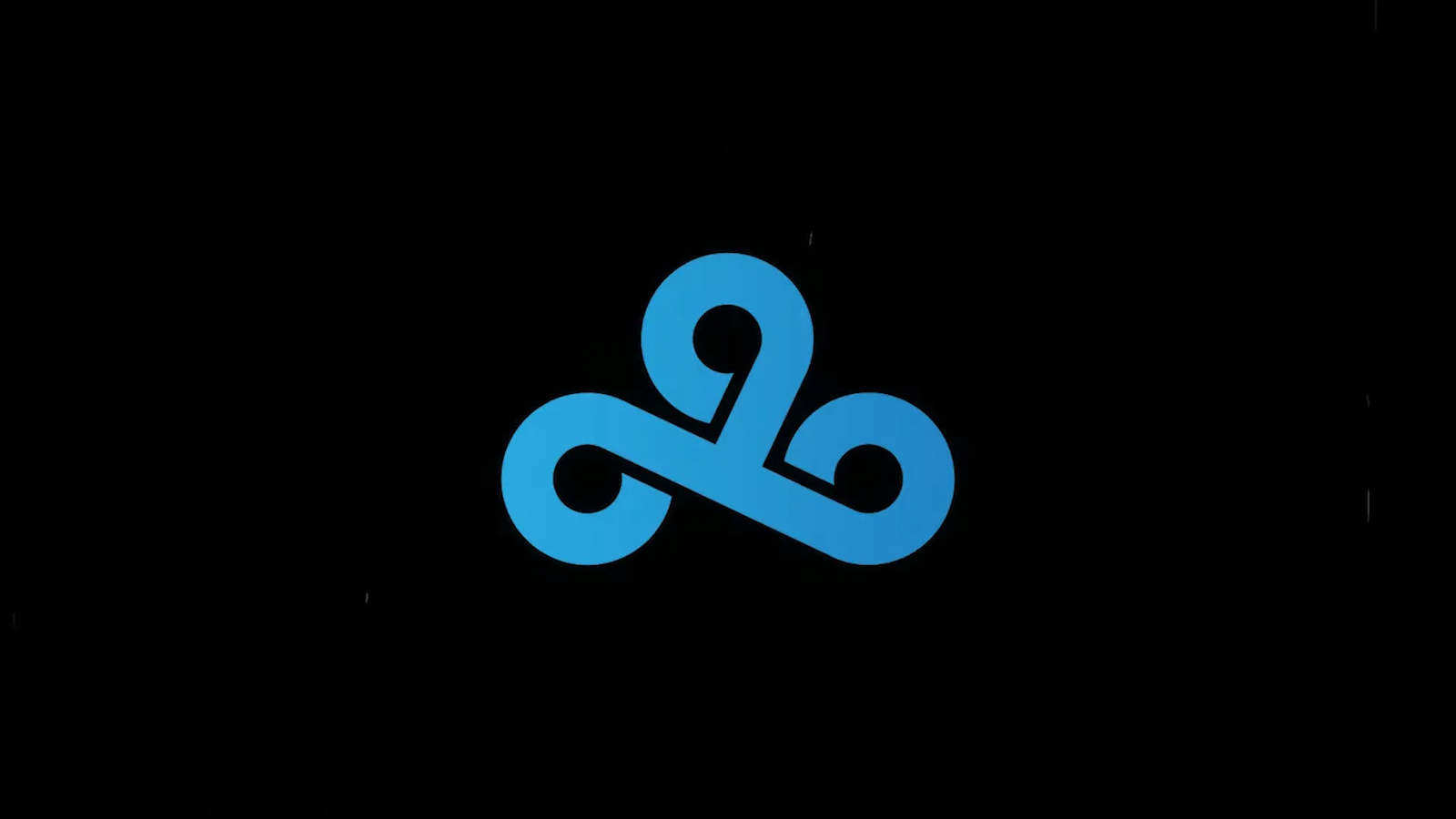

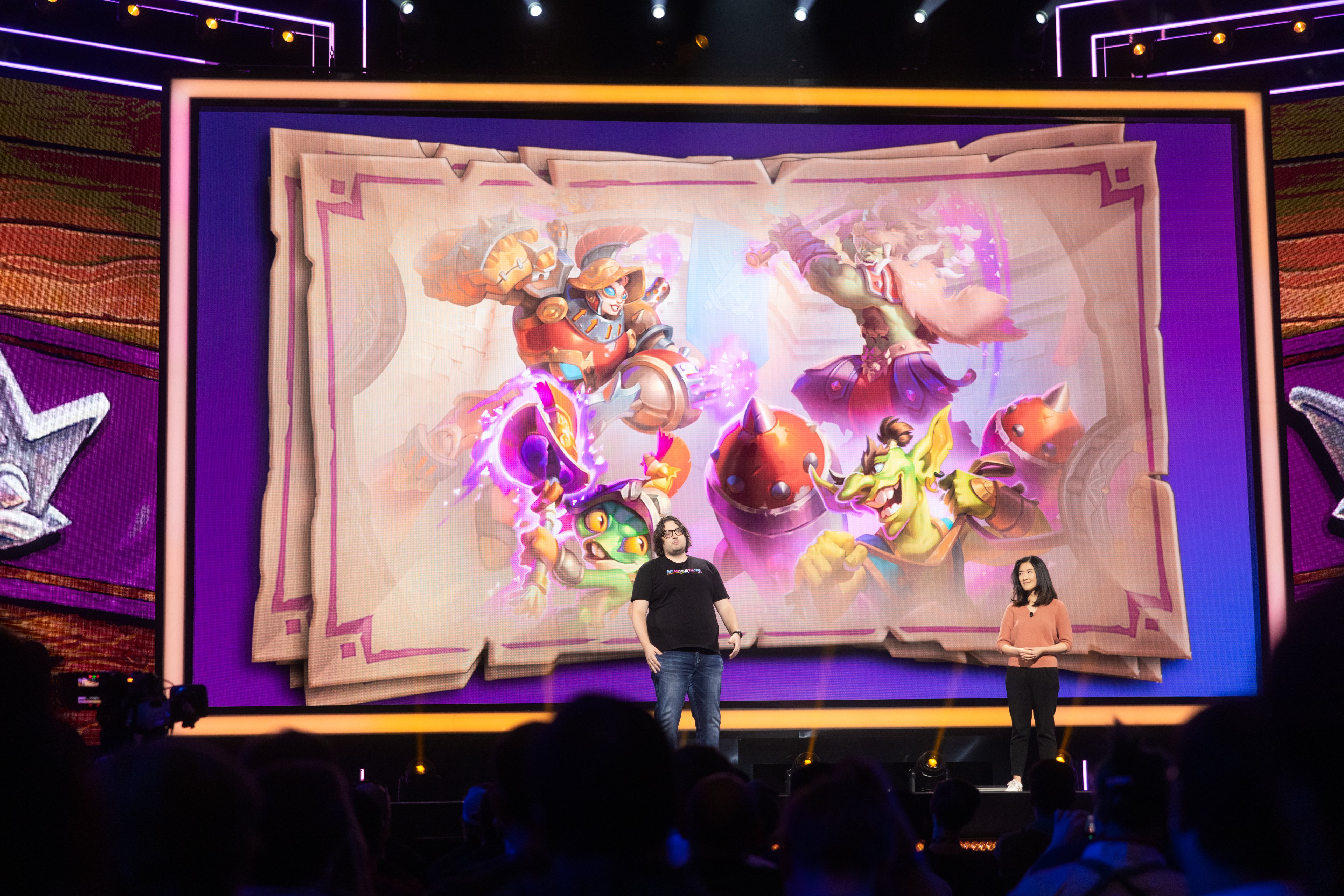
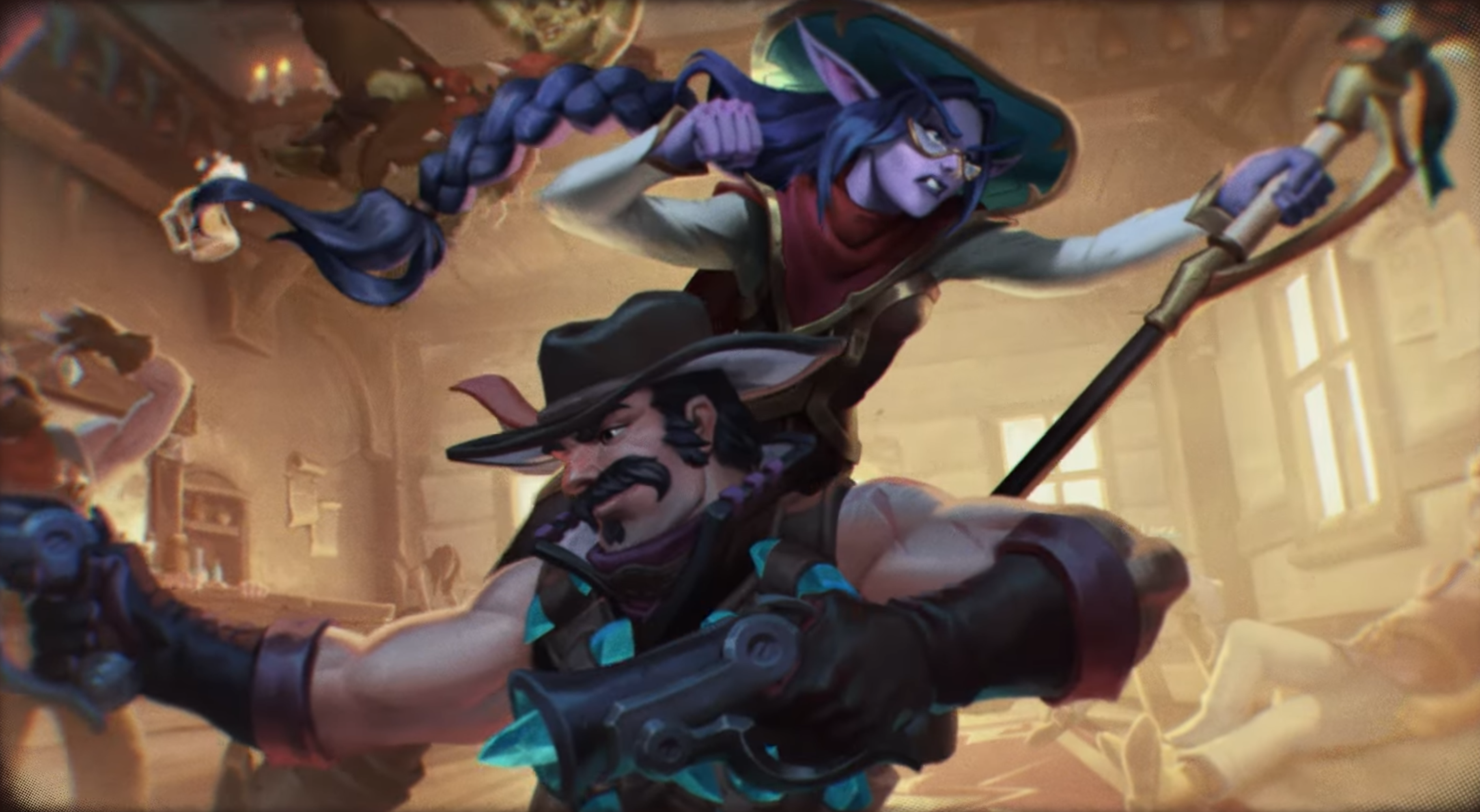
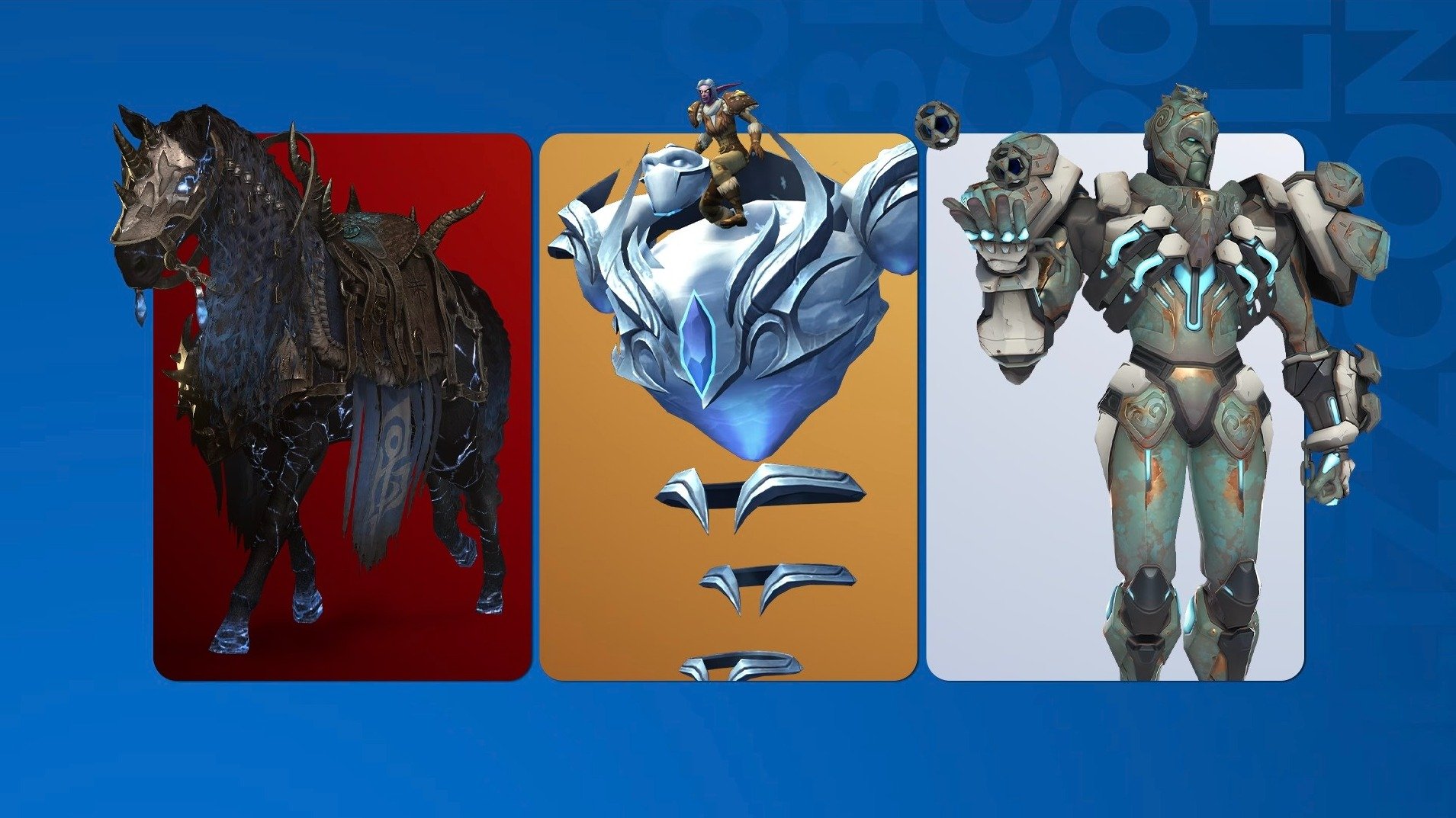
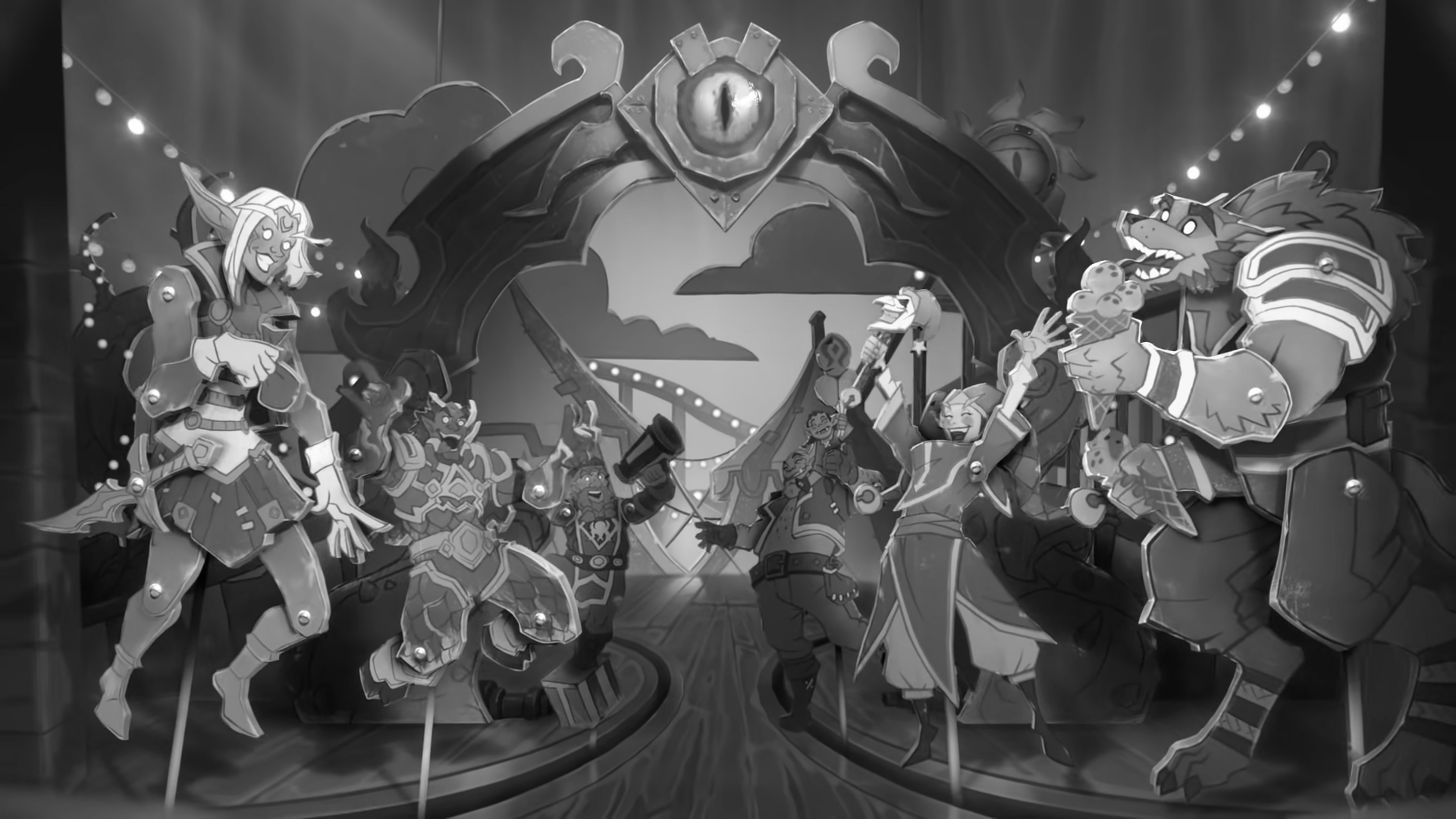
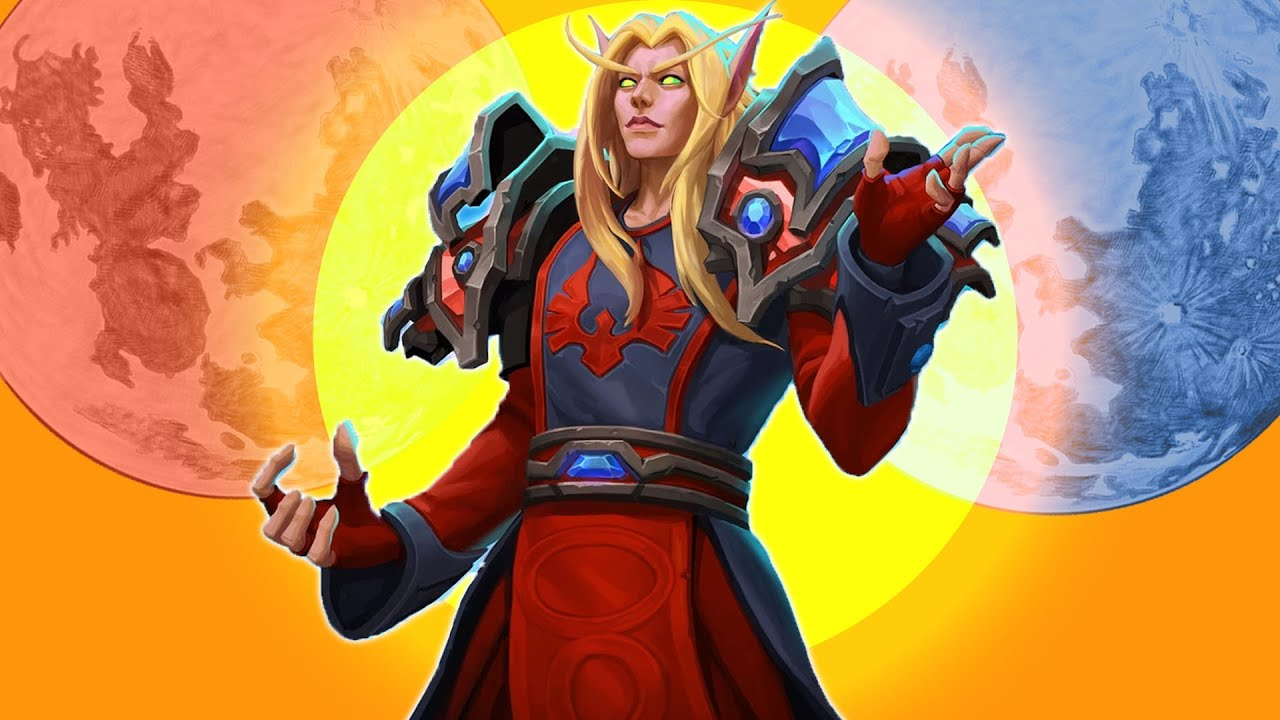
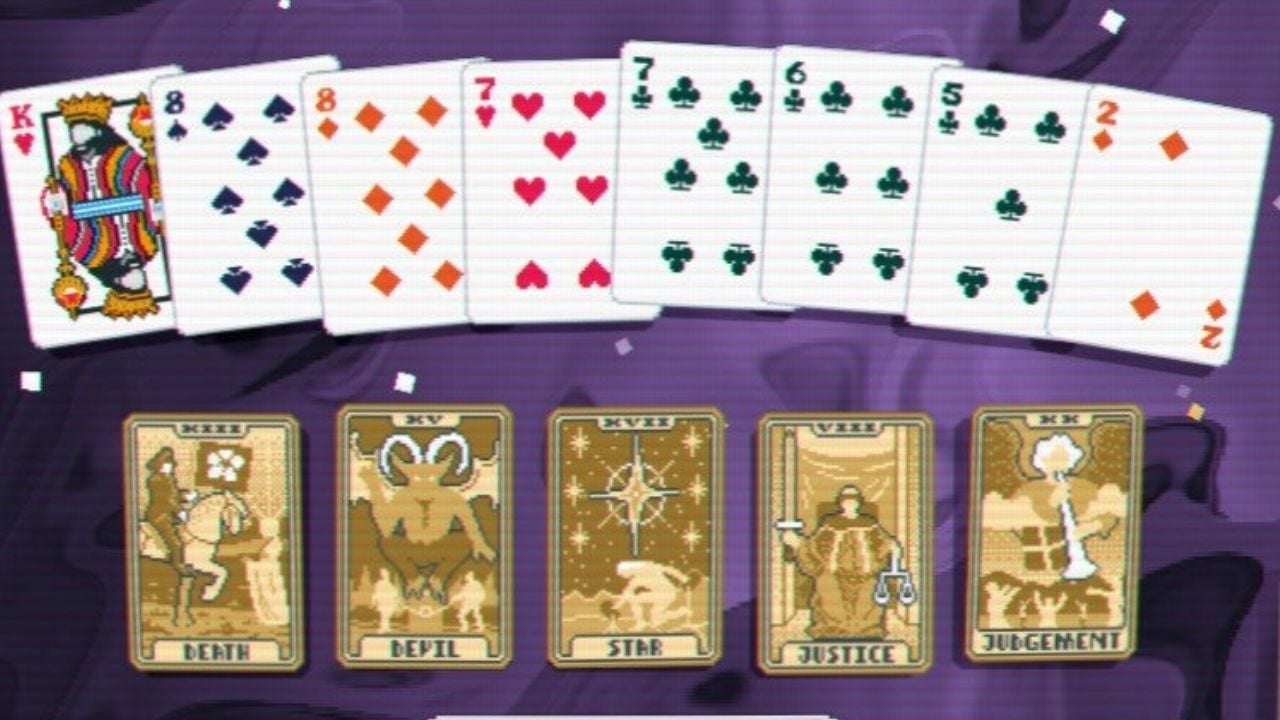
Published: Dec 2, 2015 03:51 pm